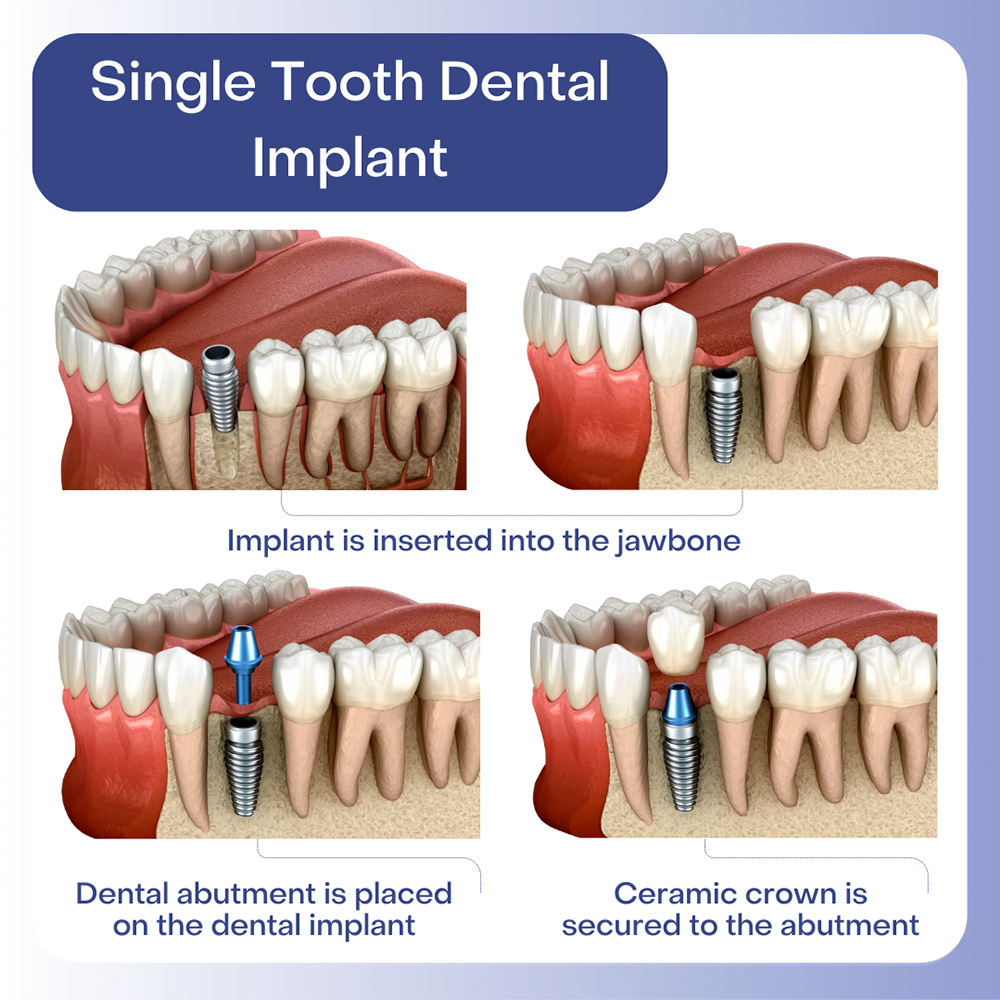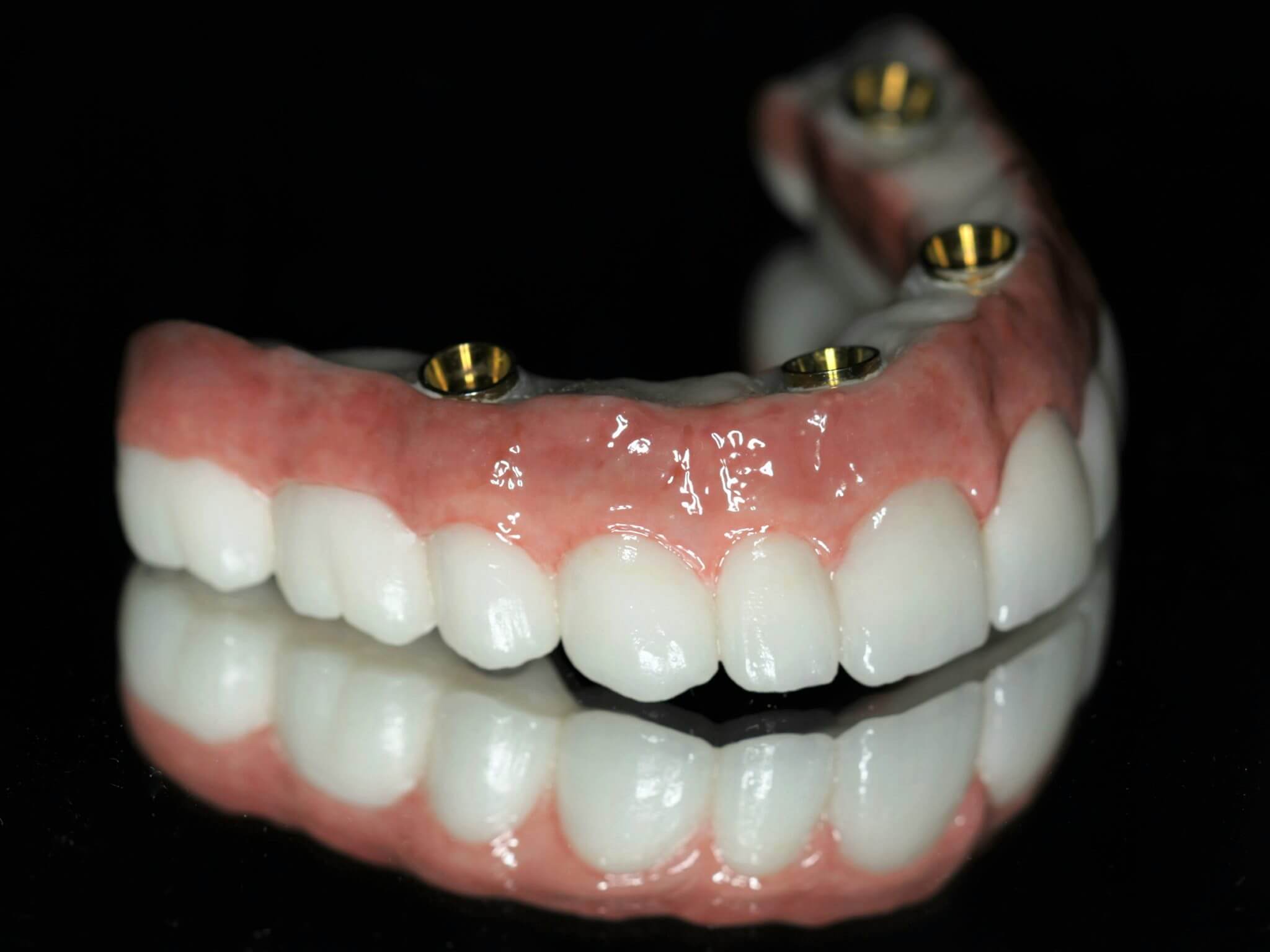The Single Strategy To Use For Dental Sense
The Single Strategy To Use For Dental Sense
Blog Article
The Ultimate Guide To Dental Sense
Table of ContentsWhat Does Dental Sense Do?The Ultimate Guide To Dental SenseGetting The Dental Sense To Work4 Simple Techniques For Dental Sense
are medical devices operatively dental implanted into the jaw to restore a person's capacity to eat or their appearance. They provide assistance for artificial (fake) teeth, such as crowns, bridges, or dentures. When a tooth is shed because of injury or illness, a person can experience difficulties such as quick bone loss, faulty speech, or changes to chewing patterns that cause discomfort.Dental dental implant systems include a dental implant body and oral implant abutment and might likewise include a joint addiction screw. Kids dental. The oral implant body is surgically put in the jawbone in area of the tooth's root. The dental implant joint is typically affixed to the dental implant body by the joint fixation screw and expands with periodontals right into the mouth to support the attached man-made teeth
(http://tupalo.com/en/users/8103990)Framework of The Dental Implant System selecting oral implants, talk to your dental service provider about the potential advantages and threats, and whether you are a candidate for the procedure. Things to consider: Your total wellness is a crucial consider figuring out whether you are a great candidate for dental implants, for how long it will certainly take to heal, and just how long the implant may remain in place.
Smoking cigarettes might influence the recovery process and decrease the lasting success of the implant. The recovery procedure for the implant body might take a number of months or longer, during which time you generally have a temporary joint instead of the tooth. the dental implant procedure: Thoroughly adhere to the dental hygiene directions offered to you by your oral supplier.
The Facts About Dental Sense Revealed
Implant failure can cause the need for one more surgical treatment to fix or change the dental implant system. Recovers the ability to eat Recovers aesthetic appearance Assists maintain the jawbone from shrinking due to bone loss Protects the wellness of the surrounding bone and periodontals Aids maintain adjacent (nearby) teeth secure Improves quality of life Damage to surrounding all-natural teeth throughout dental implant positioning Injury to the surrounding tissues during surgical procedure, such as sinus perforation Injury during surgical treatment (for instance, fracture of surrounding jawbone) Insufficient feature, such as seeming like the teeth do not attack with each other normally A sensation that the tooth hangs or turning in place resulting from an abutment screw loosening Implant body failure (looseness of the implant body) due to systemic infection, which may be most likely in clients with unrestrained diabetics issues because of neighborhood that site infection in bone and gum tissues sustaining the dental implant body because of delayed healing, which might be more probable in people who smoke Difficulty cleaning up the gums around the implant, resulting in inadequate dental health Unattended gum illness Post-surgical tingling because of nerve impingement or damage Always notify healthcare providers and imaging technicians that you have oral implants prior to any kind of magnetic vibration imaging (MRI) or x-ray procedures.
FDA is not aware of any adverse occasions reported for MRI or x-ray treatments with dental implants. Dental implants systems are typically constructed from products that comply with international agreement requirements of the International Organization for Standardization (ISO) or ASTM International. These criteria have information of what makes a safe product.

An oral implant is a framework that changes a missing tooth. With screw-like devices, the doctor inserts an implant into the jawbone, and it acts as an anchor for a man-made tooth, called a crown.
Rumored Buzz on Dental Sense
Some people are not eligible for oral implant surgery. It is for dental cosmetic surgeons to operate on individuals with: intense illnessuncontrollable metabolic diseasebone or soft cells condition or infectionIf these problems are settled, an individual can have the surgical treatment. In, dental cosmetic surgeons refrain from operating on individuals with: If individuals with any one of the above go through oral implant surgical procedure, there is a greater danger of the implant failing.

Dental implant surgical treatment is a personalized process. It's not the exact same for every person. But the complying with offers a basic overview of what you can expect your dental expert, dental doctor, periodontist or prosthodontist to do: Put the dental implant surgically. Provide you time to heal. Connect the article and final crown, bridge or denture.
Next off, your specialist will thoroughly place the oral implant into your jaw. If your implant is near the front of your mouth, your dental practitioner will make a temporary tooth for you to use up until you heal.
Some Of Dental Sense
Your company can tell you what to expect in your situation. Throughout the recovery phase, your jawbone ought to fuse to the oral implant. This process, called osseointegration, is crucial for security and lasting success. This procedure can take anywhere from three to nine months. In some instances, it might take longer.
When your implant heals, your dentist can affix the abutment (little port post) and your last restoration (crown, bridge or denture). This normally takes concerning one hour to finish and might call for a 2nd minor surgical procedure. You shouldn't feel any discomfort during your dental implant treatment because your company will utilize medicine to numb your gum tissues.
Report this page